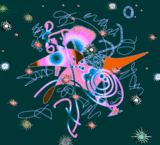Stonewall Anniversary as Gay Tourism Event
By Sewell Chan
Photos: Julienne Schaer/NYC & Company. Announcing a new marketing campaign aimed at gay tourists were George A. Fertitta, chief executive of NYC & Company, Christine C. Quinn, the City Council speaker, and Rosie Mendez, a Manhattan councilwoman.
The Stonewall riots of 1969, in which protesters clashed with the authorities after a violent police raid on a Greenwich Village bar, are a defining moment in the history of the gay rights movement. Now New York City officials hope to capitalize on the 40th anniversary of the uprising, this June, by touting the city as a gay tourist destination.
Announcing a new marketing campaign under the slogan “Rainbow Pilgrimage,” tourism officials said on Tuesday that the new marketing campaign would seek to portray a visit to New York “as a ‘rite of passage’ for the gay and lesbian traveler.”
City officials found little remarkable in using an event associated with violence and resistance as the centerpiece of a marketing campaign.
“I don’t think it’s ironic, I think it’s significant,” Christine C. Quinn, the City Council speaker, who is openly gay, told reporters at a news conference Tuesday announcing the campaign. “You know, 40 years ago a group of people said, ‘Enough was enough.’ And they struck back against police officers. They struck back against unfair treatment. They quite frankly did what they felt they had to do. And it created the modern L.G.B.T. civil rights movement.”
George A. Fertitta, chief executive of NYC & Company, the city’s tourism marketing agency, estimated that 10 percent of the city’s 47 million visitors last year were lesbian, gay, bisexual or transgender and noted that out-of-town visitors spent $30 billion in the city last year.

The advertisement urges gay tourists to visit New York as part of a “Rainbow Pilgrimage.”
Described as the “first-ever integrated marketing and communications campaign to promote gay travel to New York City,” the $1.9 million initiative includes print ads in the June/July issue Out magazine, outdoor advertising in Britain and Spain, and online ads — to start on April 13 on Web sites in Britain, Canada and the United States — that will urge travelers to “Join the Rainbow Pilgrimage and Plan Your Journey.” The campaign also includes travel packages that can be booked at a new Web site (nycgo.com/gay), and partnerships with the tourism Web sites Travelocity and lastminute.com. Bus shelters and street banners in the city also will promote the campaign, which includes a trailer for a 30-minute documentary about gay life in New York by the filmmaker George Hickenlooper.
The initiative is to culminate in the city’s gay pride celebration, from June 20 to 28. The riots, which were a response to longstanding police harassment and resulted in injuries, arrests and property damage over several days, began at the Stonewall Inn on Christopher Street in the early morning on June 28, 1969.
“I would not be happy if our history were sanitized, but as long as it’s honestly presented, I like the idea of gay liberation history being incorporated into what is celebrated about New York City,” said Richard Burns, who was executive director of the Lesbian, Gay, Bisexual and Transgender Community Center in New York City from 1986 until February, when he left for a position at the Arcus Foundation, a philanthropy.
While commemorations of the riots are not new — the Stonewall 25 march and rally in 1994 drew an estimated 300,000 people to New York City — the use of the anniversary by the city government to draw tourists seems to be.
“Forty-plus years ago, a newspaper like The New York Times had front-page articles alerting the city to the growing problem of ‘overt homosexuality,’” John D’Emilio, a professor of history and gender and women’s studies at the University of Illinois at Chicago, said in a phone interview. “Within living memory, something has been turned around. People who were seen as an unwelcome presence are now encouraged to arrive.”
Professor D’Emilio noted precedents to what New York is doing. In 1998, Chicago designated its Boystown section as an official gay neighborhood, setting up a string of rainbow-colored pylons along North Halsted Street, a main thoroughfare. Proponents of same-sex marriage in Massachusetts and other states have argued that legalizing such unions would boost economic activity and create jobs.
“It exposes a tension that exists in almost all civil rights movements and movements for social justice,” Professor D’Emilio said. “On the one hand, there is rebellion against mistreatment, against discrimination, that can lead to very radical views of what’s wrong with society. On the other hand, succeeding in that civil-rights movement will lead to normalization and inclusion in the very thing you were protesting against.”













0 comments:
Post a Comment